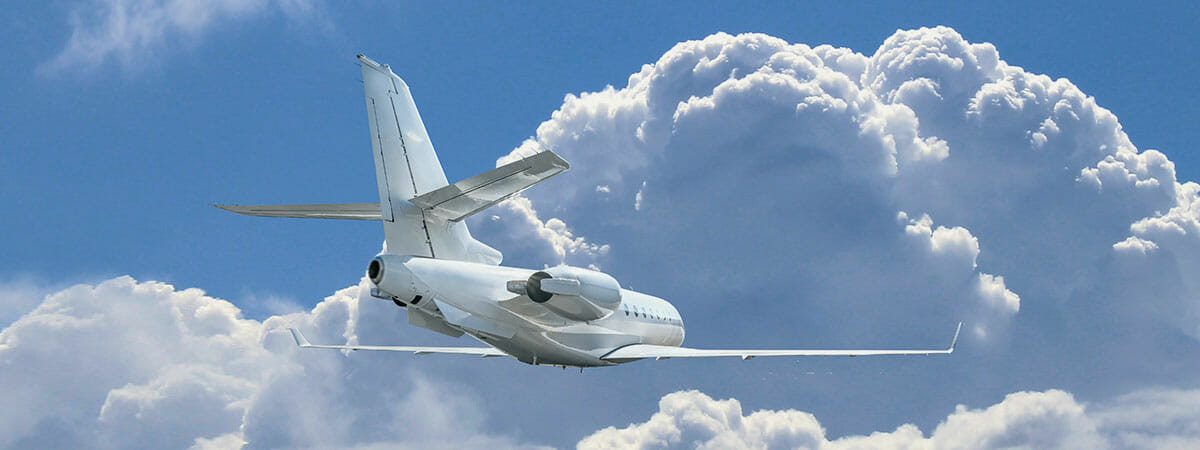In conversations with pilots, flight instructors and students in the field of human behavior on the fear some people experience when flying, it usually comes to light that one of the most recurrent fears is… turbulence.
The definition of turbulence is simple. It is the ‘shaking’ of air produced by the action of some forces in its surroundings. They could be visualized as chaotic, erratic and capricious swirls of air. Its consequences during flight are changes in attitude and altitude that result in minor shaking of the plane, often unnoticeable, to high intensity turbulence, which requires all passengers to take a seat, fasten their seat belts and follow the crews’ recommendations.
One of the most notable phenomena on any flight is turbulence, although it rarely poses a risk to the integrity of the aircraft or passengers.
Despite the dramatic nature of these phenomena, they should not pose any danger to the safety of the aircraft. What’s most normal is, if strong turbulence is encountered, for pilots to choose to reduce the speed of the plane, change altitude or, if necessary, request a route deviation.
Under normal conditions, air tends to flow in sub horizontal sheets superimposed in any layer of the atmosphere. Shaking thereof occurs equally at all levels, from the ground to well above the cruising altitude typically shared by commercial airliners.
There are many different types, although the most common turbulence experienced by airplanes in flight usually has three causes: mountains, jet streams and storms.
When it comes to mountains, the air behaves like waves in the sea when they reach the shore. They are sheets of fluid that tend to move in an overlapping fashion but adapt to the shape of the terrain and adopt different behaviors. Part of that air passes gently over the mountains and continues to move forward. Other sheets of air, however, pile up against the mountains themselves and have no choice but to rise, generating “waves,” which can propagate in the atmosphere as broad, gentle oscillations, but which can also break into many tumultuous currents, which is what we experience as turbulence.
Jet streams, in turn, are enormous, fast-moving flows of air that generally circulate near the tropopause, at the top of the troposphere (between 8,000 and 15,000 meters). They are located in polar areas (60º in northern and southern latitudes) and subtropical areas, and form when large masses of cold air and hot air meet. Jet stream winds blow from west to east at speeds ranging between 130 and 225 kilometers per hour, although sometimes they can reach 400 km/h.
Rough air (turbulence) associated with jet streams is caused by differences in wind speeds as an aircraft moves away from regions of maximum wind speeds. Slowing winds create zones of shear, which are prone to turbulence.
These types of currents are the ones that are usually the origin of the so-called “clear air turbulence”, which are invisible, unpredictable and more common during the first hours of the day, which give rise to minor shaking of the plane.
Storms, in turn, are the third common factor in turbulence generation during flights. Vertical cloud formations (especially cumulonimbus clouds) and sudden pressure changes are breeding grounds for their formation. It has also recently been concluded that storms not only generate turbulence in their immediate surroundings, but can also shake the sky in more distant areas. This is due to the creation of waves caused by the rapid growth of clouds or by very abrupt convective heating, which can cause turbulence even hundreds of kilometers away.
Regardless of its origin, the most frequently asked question from passengers regarding turbulence is usually about the risk it poses to flight safety.
Let’s assume that turbulence alone is not going to bring down an airplane, unless human error, a previous structural problem of the aircraft or the concurrence of other atmospheric phenomena is added to the equation.
The aircraft itself is resistant to turbulence thanks particularly to the flexibility of the wings which, in turn, work together with the fuselage as a torsion box. Depending on the model, the wing tip can swing up and down by even more than a meter. The wing is also one of the components that has evolved the most technically since the beginning of aviation, its flexibility being one of the key aspects in the improvement process. In addition to compensating for the weight of the plane and maintaining flight, one of its most important tasks is to ensure the ability to respond to these unforeseen weather phenomena.
Prediction is one of the keys to minimizing the impact of turbulence on flights. Although weather forecasts and pilot reports are useful to avoid areas where they occur, they are relatively unreliable tools when they work individually. In the case of forecasts, the scale of weather models is much larger than that of the airplane’s flight path, so medium and small turbulence can go unnoticed. In the case of pilot reports, the problem usually resides in the accuracy of the location, although, at least, they are able to detect the existence of turbulence in a given area.
We have been working on real-time forecast models for a decade, based on the constant collection of data from sensors on the aircraft themselves. Using data on ground speed, wind speed, atmospheric pressure, roll angle and other parameters, the algorithm generates a turbulence event warning that is shared every few seconds. This information significantly reinforces meteorological forecasts and models, offering much more precise information to pilots and giving them the possibility of act preventively.
The field of turbulence prediction is important for airlines because it is a relief for passengers that allows them to enjoy a calmer flight, but also because of the costs associated with turbulence. Up to 600 million euros annually worldwide (extra fuel costs, insurance, damage to passengers, delays, etc.) has been estimated as the cost associated with turbulence. Changes in altitude or flight route also entail an additional environmental cost due to the additional expenditure of fuel (and the consequent emissions), which in any case is undesirable.
It is clear that no one (companies, pilots, passengers…) wants to run into turbulence during a flight; but even if that were the case, we must rest assured, since technology plays in our favor both in terms of predicting turbulence and the aircraft’s response thereto. In such an event, if you look out the window and see the wings folding, it means there is turbulence, and the wings are doing their job. In that case, just continue enjoying your flight… with your seatbelt fastened.



